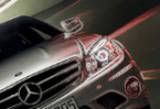Wanted to discuss generally about how component tolerances affect sound.
Questions
------------
1. Your impression on the sound from your audio system (with it sufficiently warmed up) changes on different days (same time when played) due to component tolerances and ageing?
2. The expectation that a similar set-up would sound the same (assuming similar make and size of room or environment) is quite high that should slight changes of the sound heard on a similar set-up is enough reason for you to upgrade?
Discussion
--------------
The typical audio source (cd, tuner etc), amplifier and speakers are made up of components with tolerances eg e-caps with 20% tolerance, resistors with 1% tolerance etc. During initial power-up components whether passive (resistors, caps, inductors) and active (semiconductors) assume an initial value. As things heat up (the appliance is powered on for some time), these components assume a different value within their tolerance limit. The changes are different each time unit is powered up but still within tolerance limits.
As such,
1. The sound during the first 5-10min coming from your audio system sounds a different compared to 30min later. Meaning, the sound is generally sweeter when warmed up sufficiently.
2. The reliability of the devices is based on a curve called the bathtub curve. Based on data, devices are prone to failure during the first few weeks or days. As such, manufacturers perform burn in to accelerate the ageing process to be able to attain minimal failure rate on the devices
Note: the failure rate is high during early life of appliance and when nearing end of the devices
Changes in Sound Characteristics
Moderator: JackD201
4 posts
• Page 1 of 1
Re: Changes in Sound Characteristics
rascal, seems like you answered the questions perfectly already.
This is cool info! Thanks
rascal101 wrote:
2. The reliability of the devices is based on a curve called the bathtub curve. Based on data, devices are prone to failure during the first few weeks or days. As such, manufacturers perform burn in to accelerate the ageing process to be able to attain minimal failure rate on the devices
Note: the failure rate is high during early life of appliance and when nearing end of the devices
This is cool info! Thanks
-

JackD201 - Immortal
- Posts: 10024
- Joined: Sat Oct 09, 2004 12:10 am
- Location: Bozania
Sir JackD,
It is standard for semiconductor manufacturers to perform 24hr burn-in at elevated temp. For commercial application it is 85C and 125C for military. For JAN (joint army and navy) grade this cycle is repeated over and over. Same goes for power supply manufacturers.
As such, the burn-in you perform actually extends the high failure rate (start of the bathtub) into the bottom of the bathtub (minimal fail rate). What the manufacturers have weeded out you have done. If there are any weak components you should be able to see it during this extended burn-in.
Rascal101
It is standard for semiconductor manufacturers to perform 24hr burn-in at elevated temp. For commercial application it is 85C and 125C for military. For JAN (joint army and navy) grade this cycle is repeated over and over. Same goes for power supply manufacturers.
As such, the burn-in you perform actually extends the high failure rate (start of the bathtub) into the bottom of the bathtub (minimal fail rate). What the manufacturers have weeded out you have done. If there are any weak components you should be able to see it during this extended burn-in.
Rascal101
- rascal101
- Citizen

- Posts: 685
- Joined: Mon May 30, 2005 5:05 pm
burn-in exposes the infantile mortality parts, accelerates aging. bryston amps burn-in procedures cycles the amps at full power and at elevated temps..
if i were an amp manufacturer, i would rather have my amps fail at the factory than in the house of the end-user.
why this semicinductor technology was hijacked by audio salesmen puzzels me.
burn in imho is the responsibility of the audio equipment maker, not the end user!
if i were an amp manufacturer, i would rather have my amps fail at the factory than in the house of the end-user.
why this semicinductor technology was hijacked by audio salesmen puzzels me.
burn in imho is the responsibility of the audio equipment maker, not the end user!
-

tony - Fanatic

- Posts: 1882
- Joined: Tue Jun 24, 2003 7:18 am
- Location: Pasig City....
4 posts
• Page 1 of 1
Who is online
Users browsing this forum: No registered users and 3 guests
